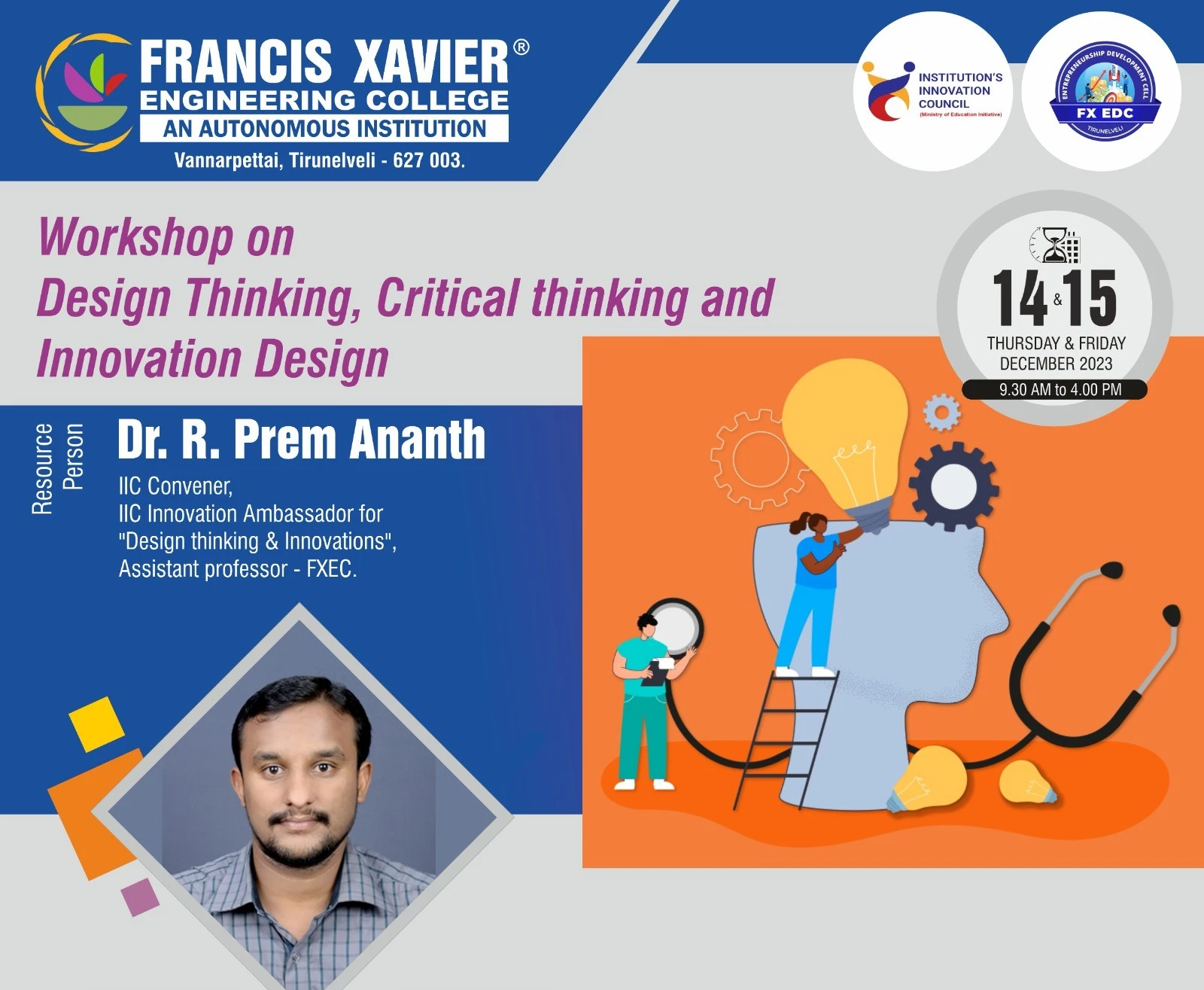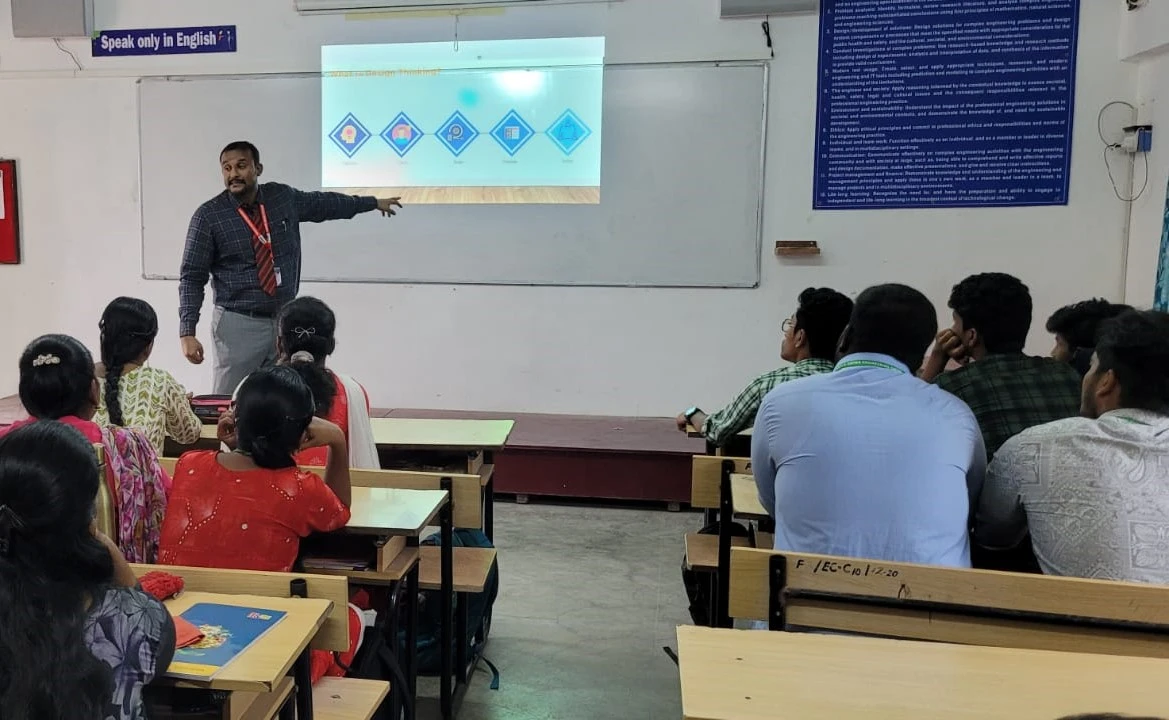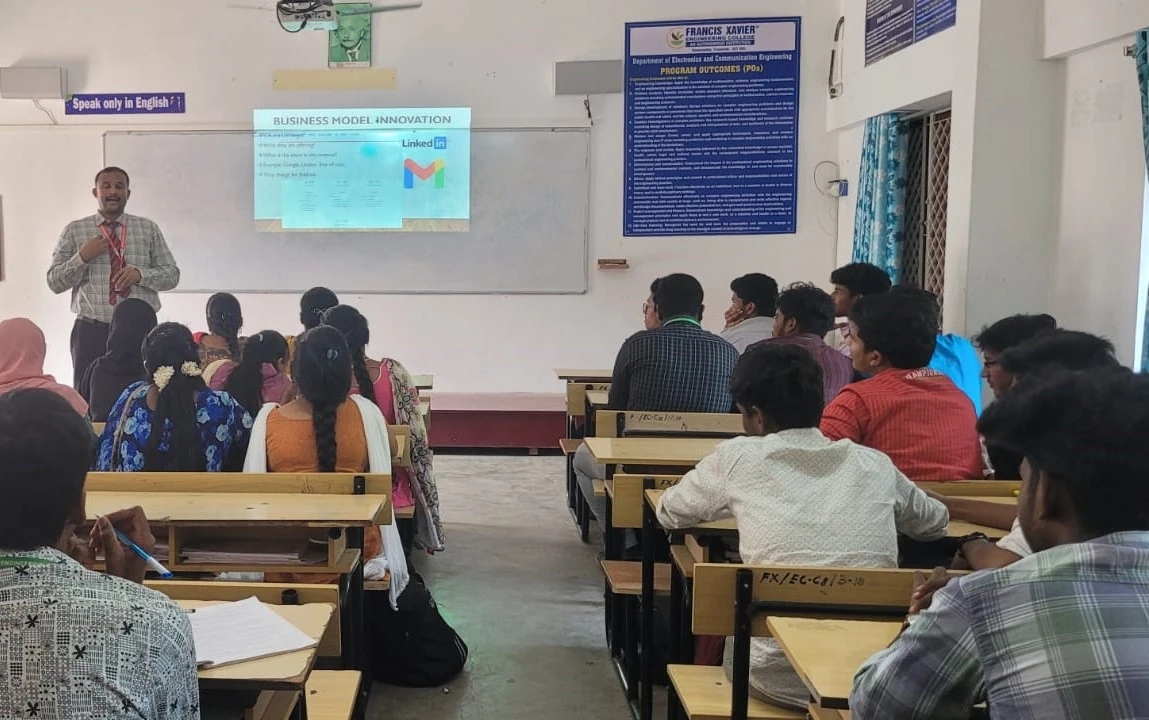
On 14.12.2023 and 15.12.2023 a workshop was organized on the title a “Design Thinking, Critical thinking and Innovation Design” by the Entrepreneurship Development Cell and IIC in association with the Electronics and Communication Engineering department. The workshop was handled by Dr. R Prem Ananth, IIC Convener, IIC Innovation Ambassador for "Design thinking & Innovations", Assistant professor, Francis Xavier Engineering College. 49 students and 2 faculties participated. This event was coordinated by Mr Pradeep T Rajan, Assistant Professor, Department of ECE, Francis Xavier Engineering College.
Day 1: The speaker started his speech by defining the word Entrepreneur. He defined entrepreneur as a person who starts a new business. He quoted the example of Deepinder Goyal the founder of Zomato as the real-world example of successful innovation come entrepreneur. The speaker asked the students to write some innovative products in pineapple and asked the students to present the products. Most of students were presented pineapple Jam, Pineapple juice, Pineapple cake and pineapple alwa, But the speaker said to the students that these are not innovative products. The speaker shared few products like conversion of pineapple waste to ethanol, extraction of fibre from pineapple leaves to make cloth, bags and tea cup. The speaker said Adhoc innovation, Systematic (structured) innovation, Incremental innovation, Breakthrough innovation and Frugal Innovation were the classification of innovation. He explained each classification with real world examples. The speaker also shared few industrial type innovation, like product innovation, process innovation, customer experience innovation and business model innovation. He compared post office and Professional courier as an example for customer experienced innovation.
Day 2: The speaker started the session by asking a question to the students that what do you meant by Identifying a problem. The speaker asked the students to identify the gap between the features available in the existing products and the new features added in the new product. He highlighted the techniques which can be used for generating the probable solution to address a problem such as brainstorming, mind mapping, or research to come up with good ideas. Later create prototype with best ideas generated by brainstorming. The speaker said design thinking is one of the best approach for problem solving. Design thinking is a type of creative problem solving that focuses on the needs and perspectives of the users. The speaker said design thinking consist of 5 steps, they are Empathize, Define, Ideate, Prototype and Testing. Empathize: This stage is about researching and understanding the users’ needs, problems, emotions, and motivations. It involves observing, interviewing, and immersing oneself in the users’ context and experiences. Define: This stage is about synthesizing and framing the insights from the empathize stage into a clear and meaningful problem statement. It involves identifying the main challenges and opportunities for the users, and articulating their goals and values. Ideate: This stage is about generating a wide range of possible solutions to the problem statement. It involves brainstorming, challenging assumptions, and exploring different perspectives and angles. The goal is to be creative and divergent, without judging or filtering the ideas. Prototype: This stage is about making low-fidelity versions of the ideas to test their feasibility and desirability. It involves building mock-ups, sketches, models, or scenarios that can be quickly and cheaply made and modified. The goal is to learn by doing and experimenting. Test: This stage is about evaluating and refining the prototypes with the users and other stakeholders. It involves collecting feedback, observing reactions, measuring outcomes, and identifying strengths and weaknesses. The goal is to learn from the users and improve the solutions. Design thinking is a flexible and adaptable approach that can be applied to any domain or industry. It can help you solve complex and ill-defined problems in a human-centric way.

